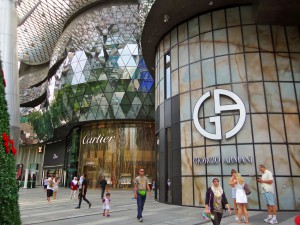The overall luxury industry comprises nine segments in total, one of which is personal luxury goods. Factoring all segments, the overall luxury market exceeded €850 billion in 2014, showing healthy growth of 7% overall, driven primarily by luxury cars (10%) and luxury hospitality (9%).
Research finds that international travel and tourism is fueling an appetite for 360-degree luxury experiences, such as high-end transportation, that includes highly customized “super cars” and yachts, as well as luxury hotels and cruises.
Not to be outdone, personal luxury goods—the “core of the core” of luxury—continue to buoy the market. The overall market is on target to reach €223 billion in 2014, triple its size 20 years ago. Yet that growth is slowing: in 2013, luxury goods grew 7%, and in 2014, growth slowed to 5% at constant exchange rates (2% at current rates). That slower pace is, however, more sustainable, and it reflects the “new normal” for luxury goods, particularly as the global economy continues its sluggish recovery from the financial crisis of 2008. Demand from Chinese consumers, mature consumers in the US, and Japanese shoppers returning to luxury goods have all helped shore up growth.
It is worth noting that luxury spending doesn’t always take place at home. The luxury-goods industry in most markets is now driven by touristic spending, which means that who the buyers are matters more than where they buy. There are exceptions, however. Japanese citizens make most of their luxury purchases at home, primarily owing to currency factors. (The value of the yen has declined nearly 30% since 2012.) But Chinese consumers now represent the top and fastest-growing nationality for luxury, spending abroad more than three times what they spend locally. Tourists are also increasingly influencing the luxury market in the Americas. With such cross-pollination of luxury spending, it makes less and less sense to think only in terms of location.
Instead, the focus is shifting to consumers, with local trends and tastes representing only part of the picture. This new mind-set has important implications for luxury brands. It requires thinking about the product offerings from a more global perspective, with the concepts of seasons and national boundaries—key pillars of this industry—becoming obsolete.



